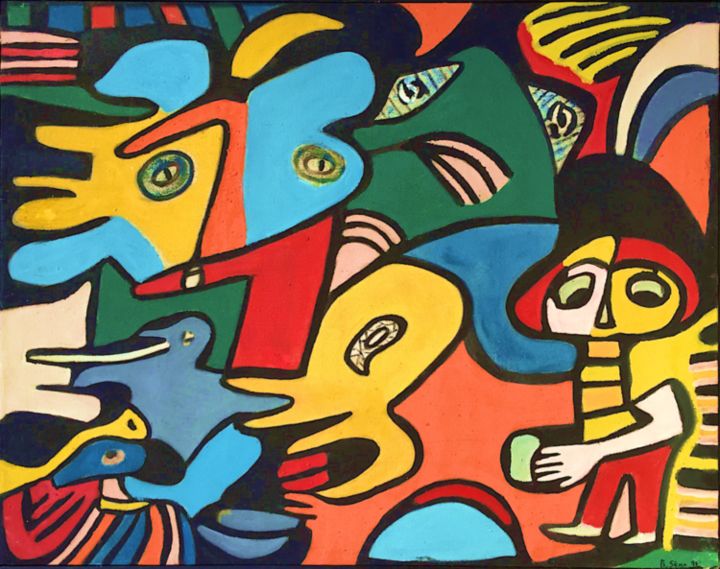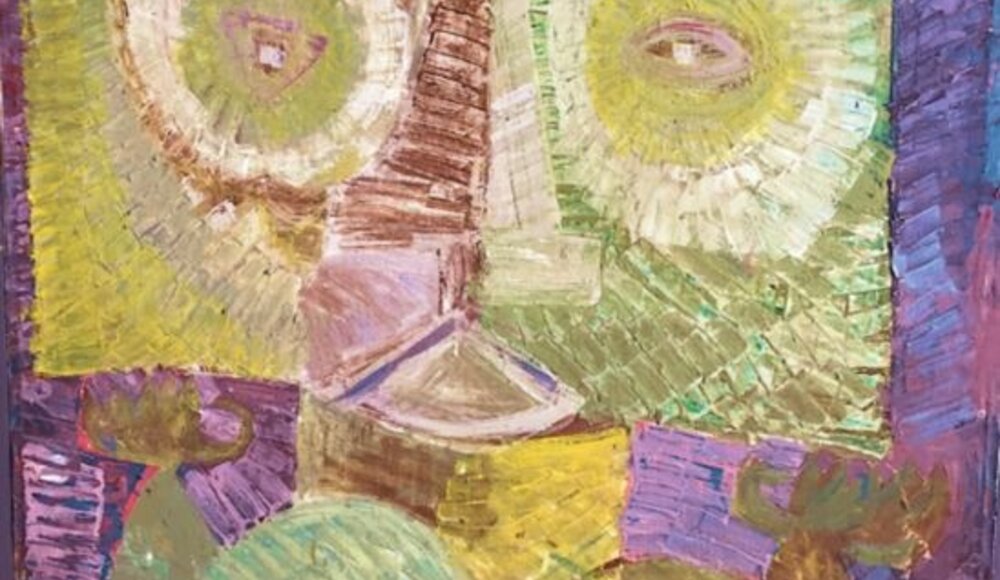African art is always confined to its "first art" component. The most recent exhibitions made Picasso and his contemporaries interact with statues or reliquaries, but never ever with African artists of their time ... It is as if contemporary African artists were not recognized as having any quality, influence or value in this highly strategic financial and cultural market.
However, as early as the 1930s, the first penetrations of European techniques and models into the African visual arts led to a first local awakening (known as "indigenous art").
In 1951, Pierre Lods created a painting workshop in Brazzaville. He does not impose any artistic rules on his pupils, asking them to give free rein to their creativity, spontaneity and tradition. The school of “Poto Poto”, one of the first artistic schools on the African continent, was born. The style Miké (colorful slender characters) will spread to all Africa.

Following the independence of Congo in 1960, Pierre Lods was called to Senegal by President Senghor to create, alongside Ida Ndiaye (one of the first great African artists known for his Tabaskis series) what will be called the “School Of Dakar”. Each student is introduced to the latest western artistic techniques, allowing him to explore new paths on new media that were not used because they were too expensive. The pupils of Iba Ndiaye, on one hand, will follow in the footsteps of the conceptual or abstract art. While those of Pierre Lods, will concentrate on the figuration of their traditions, dear to the poet and singer of the negritude President Senghor. These modern artists, Amadou BA, Amadou Seck, Diatta Seck, Chérif Thiam, Philippe Sène ... seen and praised by none less than Picasso, Soulages or Chagall, will constitute the prodigious pioneers of modern African art, still neglected today. They created the first African art “golden age”, thanks to the commitment of a president in love with arts and culture (30% of the state budget will be devoted to them!).
Collecting works of art is a rare practice in Africa (objects originally having a ritual or sacred function), promotional structures and museums having scarce means, the status of artist in Africa proves to be very complicated. Strong figures, supported by some patrons, nevertheless emerge: the Senegalese Ousmane Sow or Amadou Seck, Ghanaian El Anatsui, Congolese Chéri Samba, photographer Malick Sdibé, potter Seni Camara of South Africa Irma Stern and William Kentridge, Ethiopian-American Julie Mehretu, among others.
Various individual initiatives will emerge, such as the Pigozzi, Zinsu or Blachère Foundations, accumulating works by hundreds, to be displayed and valued.
For the past two or three years, it has become clear that there is a real media shudder and an early structuring of the modern and contemporary African art market.
Admittedly, it is a plural art that is very original and authentic because of its forms, its choice of colors, its often natural supports, its traditional and contemporary inspirations. From these works emerges a lot of vitality, humanity, rhythm and strength. Untouched by the trend effects and the decorative and mercantile inclinations of a western art that is still in the seeking, the African art revivifies, renews and gives a new breath to contemporary art.

Since 2013, a Contemporary African Art Fair called "1: 54" (1 continent, 54 countries) is organized in London, and recently in New York. The first edition of its French competitor AKAA (Also Known As Africa) took place at the end of 2016. South Africa is very active with the Joburg Art Fair and the Cape Town Art Fair.
An Africa Art Market Report has been published in 2015 which gives valuable benchmarks in terms of analysis of the contemporary and modern African art market. It also reveals that it is very much under-exploited and under-animated, with the notable exception of South Africa and of a few mainly western collectors.
As the economies of the African continent are growing, many modern and contemporary artists of high quality, as welle as local collectors are expected to emerge. The African art market is set to grow.
Let us hope that, after being denied for a long time, it will escape the speculative fever that the Chinese market has experienced. Wishing that it will develop in a long-term perspective and re-appropriation by local actors and collectors of their cultural and artistic heritage.
Article proposed by:



 Nicolas Sarazin
Nicolas Sarazin